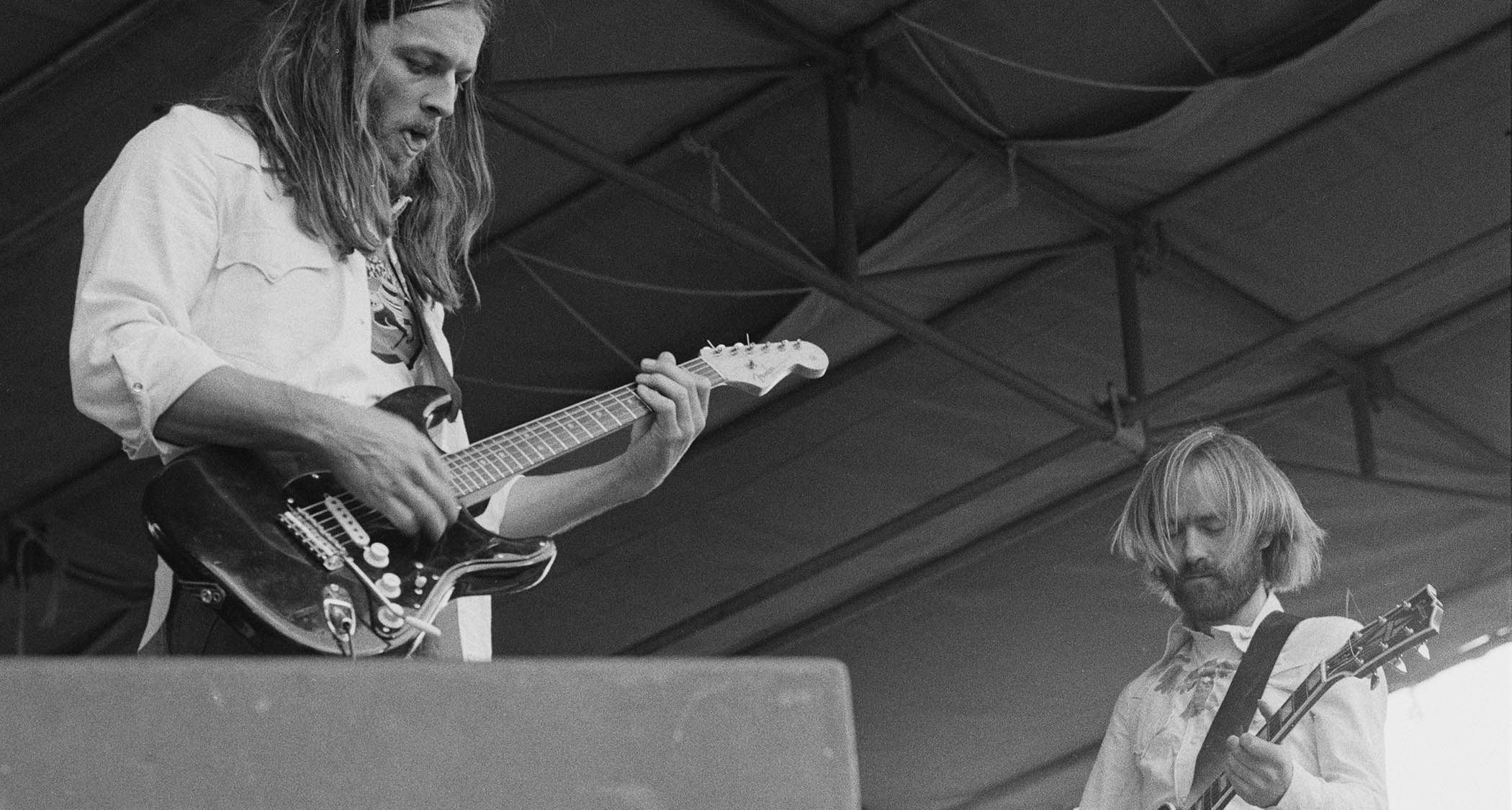
Like a lump of Play-Doh, the archetypal session guitarist is malleable, able to stretch their style to accommodate any playing situation.
David Gilmour is, for good reason, not a hired gun by trade – sure, that’s one perk of being a world-famous rock star, but it’s also due to his sonic thumbprint. You get this dude because you want that David Gilmour touch (and, let’s be honest, you’re also comfortable being overshadowed on your own track).
When he wasn’t conquering planet Earth with Pink Floyd or working on his own music, Gilmour did rack up an impressive amount of session credits – with everyone from enormous pop stars (Paul McCartney) to art rock legends (Robert Wyatt) to an obscure songwriter you’ve most likely never heard of (Rachid Bahri). Let’s examine 10 of his finest extracurricular guitar moments.
Roy Harper – The Game (Parts 1-5) (1975)
Progressive folk artist Roy Harper looms large in Gilmour’s history, adding backing vocals to Gilmour's 1984 solo album, About Face, and taking a famous lead on Floyd’s acerbic psych-funk classic, Have a Cigar.
But the duo also came together for The Game (Parts 1-5), a nearly 14-minute epic from Harper’s HQ album, with bassist John Paul Jones (Led Zeppelin), and Bill Bruford (King Crimson, Yes) rounding out what could be the most impressive one-off studio band ever assembled.
The whole piece is worth (re)discovering, but Gilmour shines brightest around the five-minute mark, adding some spacey leads during a lovely folky stretch.
Rachid Bahri – Il Survivra (1977)
It’s hard to track down concrete info about soul-funk songwriter Rachid Bahri, but he apparently didn’t have trouble tracking down a bunch of famous session players.
His self-titled French-language LP features heavy hitters like Steve Winwood (keys), Kenney Jones (drums), Rick Wills (bass), Tim Renwick (guitar), and, perhaps most notably, two members of Pink Floyd.
Gilmour and Nick Mason appear on Il Survivra, a slow-burning ballad pitched somewhere between art-rock and jazz-fusion – and it’s fascinating to hear the guitarist in this context, ripping into pinched harmonics and greasy leads over glimmering keys.
Supertramp – Brother Where You Bound (1985)
Supertramp pulled out all the proggy stops for the 16-minute Brother Where You Bound, the title track and centerpiece of their first post-Roger Hodgson LP. One such “stop” involved recruiting Gilmour to do Gilmour things, like toss off some soulful, arena-sized melodies during a slow stretch about seven minutes deep.
Bryan Ferry – Is Your Love Strong Enough? (1986)
Legend, the Ridley Scott fantasy-adventure film starring Tom Cruise, includes a mostly ambient score by synth giants Tangerine Dream. But the soundtrack’s biggest selling point is, inevitably, Is Your Love Strong Enough?, a charismatic ballad fronted by Bryan Ferry at his sophisti-pop peak.
Gilmour adds a little edge to this quasi-power ballad, but bonus points for the gorgeous volume swells and psychedelic delay during the intro.
Berlin – Pink and Velvet (1986)
Everyone knows Take My Breath Away, the chart-topping ballad from Top Gun. But there’s a good chance you haven’t heard this seven-minute anthem, which closes out Berlin’s fourth LP, Count Three & Pray, with some soaring atmospherics – most notably Gilmour in full-blown Comfortably Numb mode. The guitarist sounds inspired here, even weaving in some wild chromatic runs and experimental effects.
Arcadia – The Promise (1986)
Arcadia was Duran Duran’s short-lived art-pop spinoff, with singer Simon Le Bon, keyboardist Nick Rhodes, and drummer Roger Taylor joined by an army of high-profile guests (including Sting, Herbie Hancock, and Grace Jones). Gilmour shows up on overcast single The Promise, darkening the storm clouds with his tasteful bends.
Paul McCartney – We Got Married (1989)
The former Beatle seemed to have Gilmour on speed-dial for several years; the latter’s guitar cameos include Wings’ star-studded 1979 instrumental, Rockestra Theme, the 1984 solo ballad, No More Lonely Nights (the long fadeout section of which is pretty much owned by Gilmour), an obscure semi-gem called I Love This House, all of 1999’s Run Devil Run, and 2000’s Live at the Cavern Club (DVD) – and this tough-shelled art-rocker, a highlight from McCartney’s Flowers in the Dirt.
Gilmour’s presence on this track – which was released in ’89 but recorded in ’84 – is essential; dig those chunky rhythms and high, squealing lines.
Kate Bush – Love and Anger (1989)
Gilmour has a long history with art-pop icon Kate Bush – he helped organize her first professional demo recordings, introduced her to valuable industry connections, and wound up co-producing her 1978 debut.
The guitar god also remained in her general orbit, first adding vocals to 1983’s Pull Out the Pin and then, more crucially, contributing some cinematic guitar to one of Bush’s most underrated songs, 1989’s Love and Anger.
His crunchy chords pierce through the fabric of the fretless bass and tom-toms, careful not to overcrowd the spacious arrangement as Bush’s vocals ascend into the wide-open sky.
Robert Wyatt – Forest (2003)
Canterbury scene icon Robert Wyatt didn’t need any guitar overdubs on Forest, the experimental jazz waltz from his eighth LP, Cuckooland. But Gilmour’s shapeshifting effects are yet one more layer of fairy dust sprinkled atop the cascading woodwinds and stabbing ride cymbals.
Alan Parsons – Return to Tunguska (2004)
Alan Parsons, king of the hi-fi recording, helped bring to life Pink Floyd’s The Dark Side of the Moon. So it made sense for Gilmour to return the studio favor on Parsons’ nine-minute solo track, Return to Tunguska, offering some sustained electric nuggets amid glitchy electro-psych on the same wavelength as Metallic Spheres.







